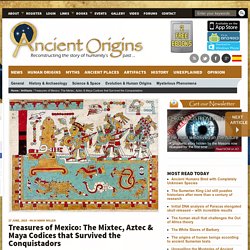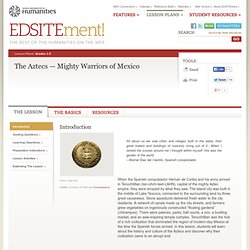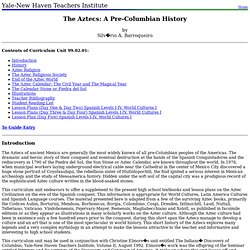

Rewriting American History - Unknown Ancient Civilization Entered North America Before The Clovis Culture! MessageToEagle.com - Scientists have added a new and dramatic chapter to the history of the peopling of the Americas striking a deadly blow to the "Clovis First" theory that has dominated pre-historic American archaeology for so long.

It has long been debated who were the first humans to enter the North American continent. Were they humans who founded what is known as the Clovis culture over 13,000 years ago? Or did other, totally unrelated peoples precede the Clovis immigrants? The Clovis culture has been seen as the cradle of North American indigenous culture. Now new international research shows that people of another culture and technology were present concurrently or even previous to those of Clovis.
Evidence that a non-Clovis culture was present in North America at least as early as Clovis people themselves and likely before is presented by an international team of researchers from the USA, the UK, and Denmark. Dr. Dr. Dr. Ancient America: Archaeology of American Civilizations. Archaeologists shed new light on Americas’ earliest known civilization.
Contact: Tom Parisi, NIU Office of Public Affairs(815) 753-3635 Complete press kit: Archaeologists shed new light on Americas’ earliest known civilization DeKalb, Ill.— Overlooked for at least a century because there was no pottery or gold, a sand-swept region of archaeological sites in north-central Peru is now believed to be the place where cultural evolution in the Andes—and in the Americas, for that matter—first diverged from simple hunting and gathering into complex society.

Recent archaeological excavations bring into focus a civilization that acrose more than 5,000 years ago in three small valleys 100 miles north of Lima. Over more than a millennium, it spurred the development of more than 20 separate major residential centers. Creamer is a co-author of the Nature article with her husband Jonathan Haas of The Field Museum in Chicago and with NIU graduate student Alvaro Ruiz, the Peruvian co-director of the project. E-mail press@nature.com to receive a copy of the Nature paper.
Treasures of Mexico: The Mixtec, Aztec & Maya Codices that Survived the Conquistadors. When Europeans arrived in the New World, they did not only kill people with war, slavery and disease, they also attempted to destroyed the cultures of the native peoples.

Among so many cultural tragedies, one stands out in Mexico: the burning of ancient manuscripts illustrated and written before and shortly after the Spanish invaded. The Mexican codices, as they are called, are richly illustrated texts that provide a window into the life, history, religion, and culture of Mexico, before and after the Spanish invasion that began in 1521. Only about two dozen pre-Spanish codices survived the tragedy of the book-burning. Several others survive from after the invasion. The University of Arizona Library website says Mexican rulers also destroyed some manuscripts. The books were written and illustrated mostly by Mixtec, Aztec and Maya people and go back as far as 629 AD, through to 1642 AD. The Mexican codices are made of long strips of deer hide, cotton cloth or bark paper. Mixtec codices. The Aztecs — Mighty Warriors of Mexico. Activity 1.

99.02.01: The Aztecs: A Pre-Columbian History. History The Beginning The Aztecs started as a group of American Indians speaking Nahuatl (Nah-wah-tl), a language of the Siouan (See-oh-ooahn) family.

They were descendants of theAsian people who arrived on the North American continent after crossing the Bering Strait during Earths last Ice Age and migrating south, following the mammoth herds. They came originally from the Northwest, from the arid cactus lands, but may have been in Mexico for several centuries before they became a powerful tribe. A similar language, Nahua, was also spoken by the Toltecs (Tohl-teks), who controlled most of Mexico between 750 AD and 1000 AD. The Aztecs never called themselves Aztecs, but rather Mexica (Meh-shee-kah)the folk of Mexi, a priest-chief from ancient, legendary times. Inca Empire (Machu Picchu Road to the Sky)